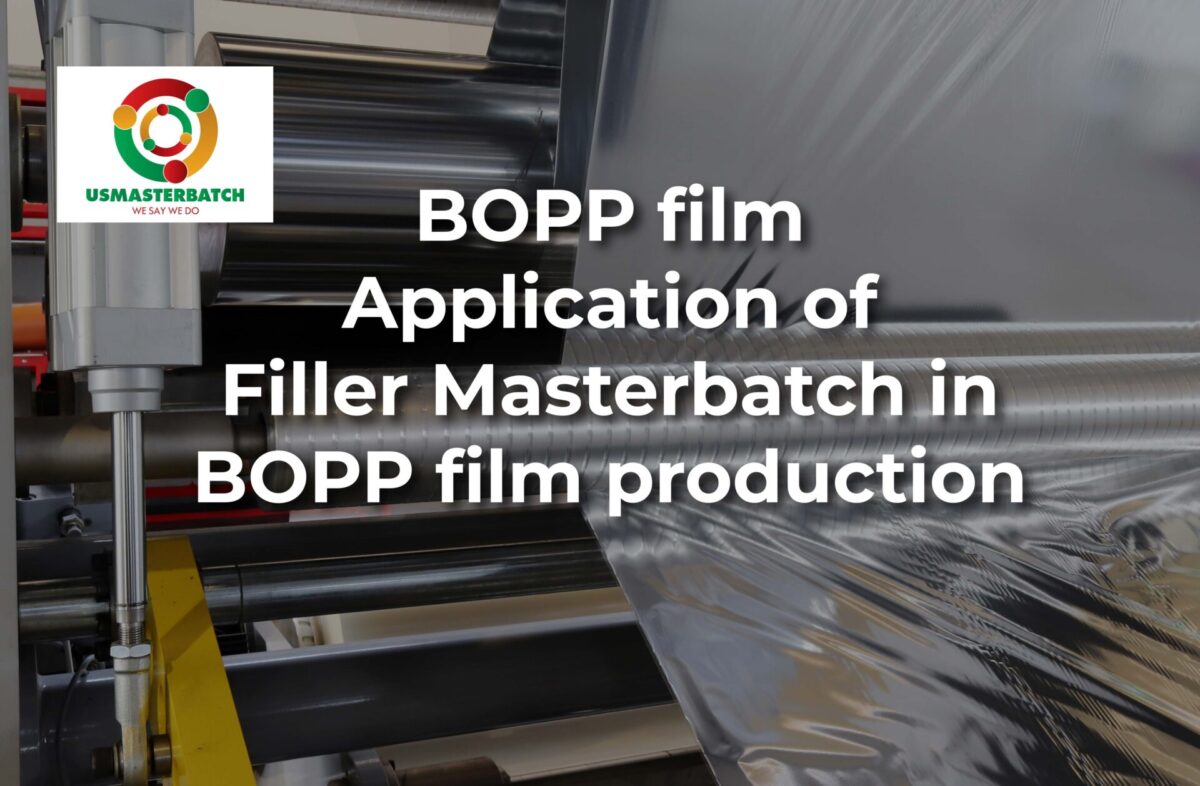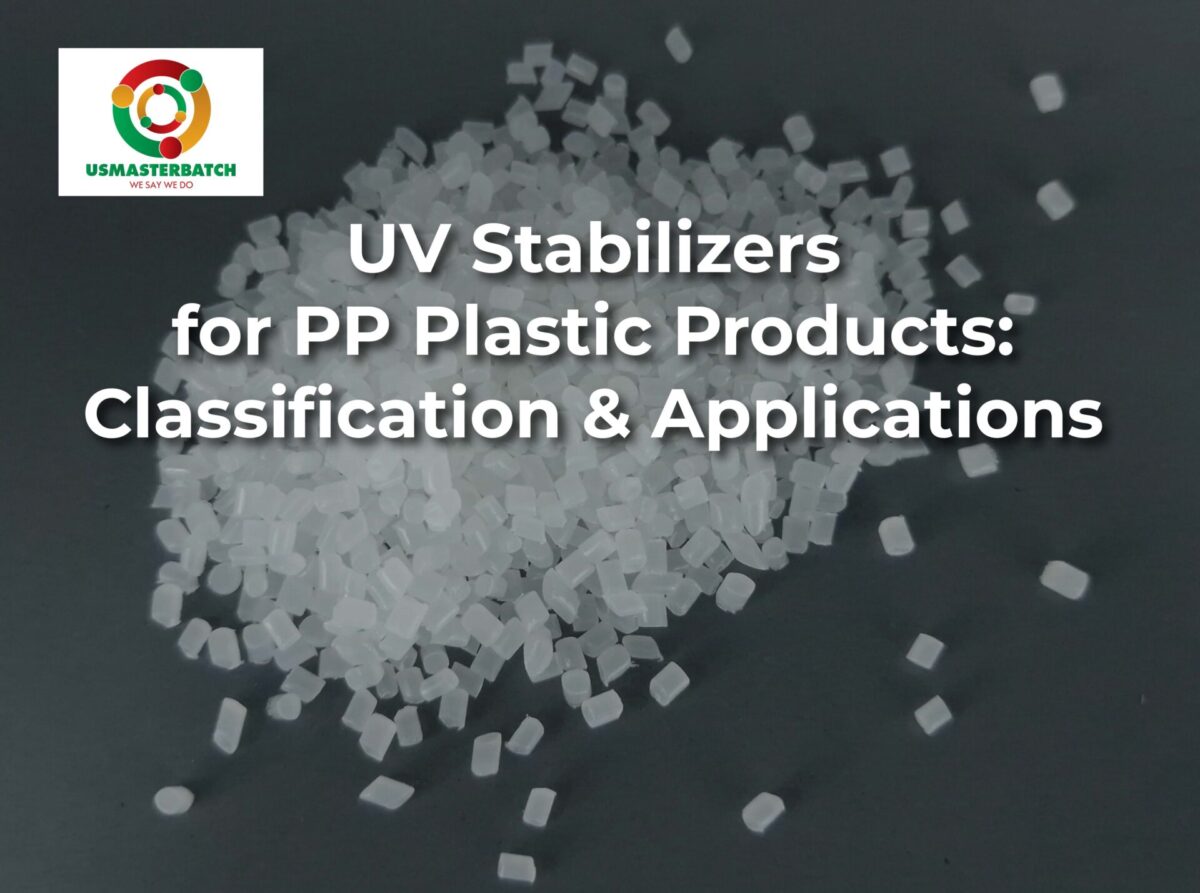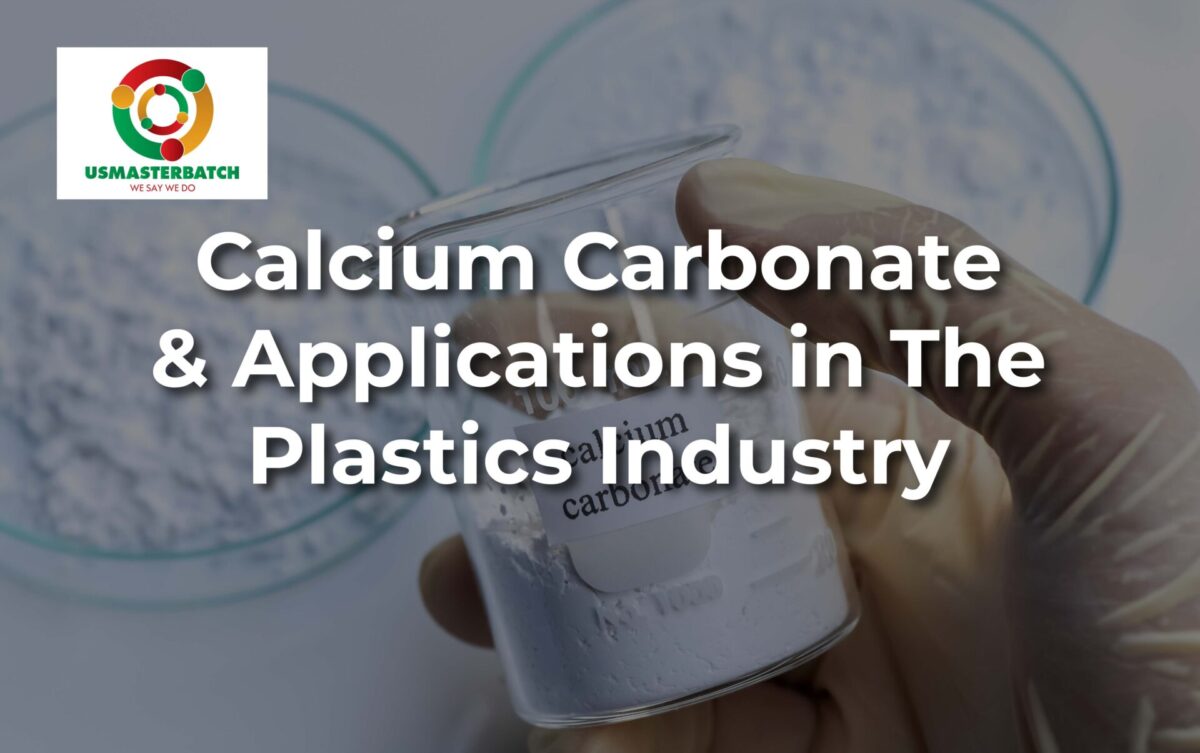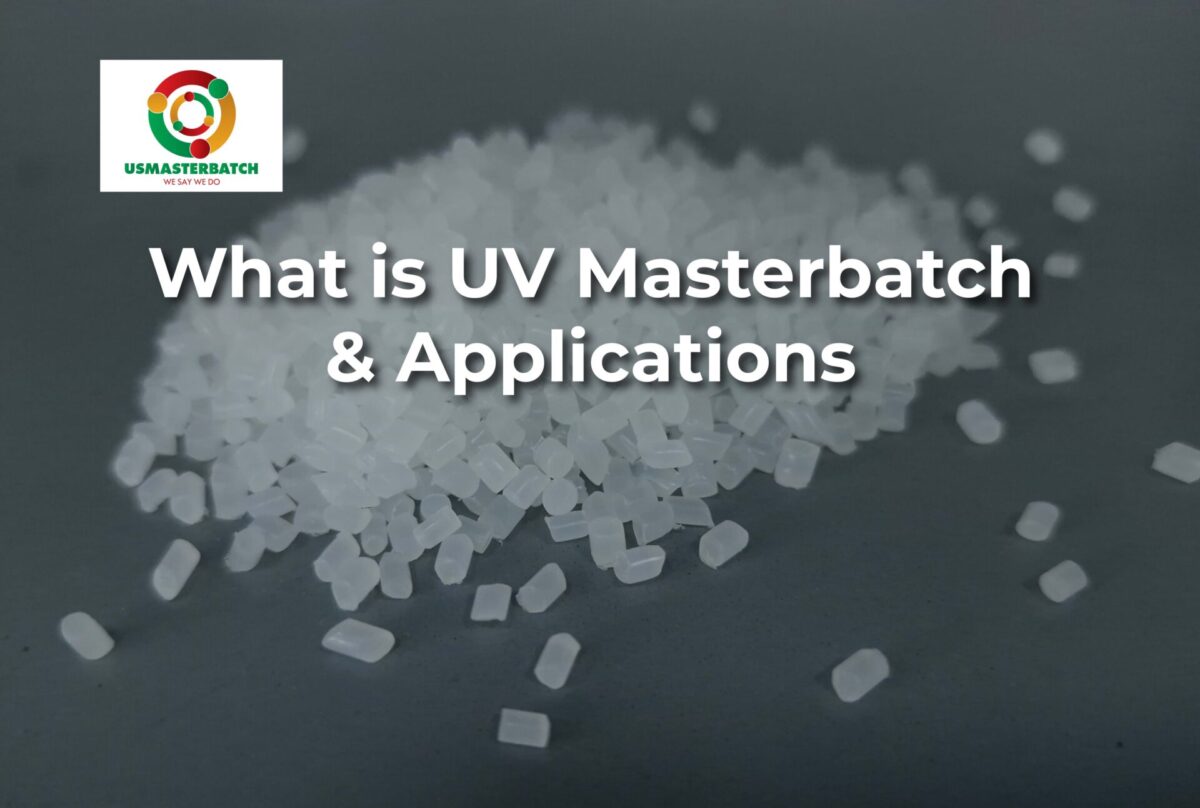
BOPP film and Application of Filler Masterbatch in BOPP film production
1. What is BOPP film?
BOPP (Biaxially Oriented Polypropylene) is a kind of plastic film manufactured from polypropylene (PP) and stretched vertically and horizontally. Thanks to this stretching technology, BOPP has high strength, good transparency and outstanding moisture, gas and grease resistance.
Nowadays, BOPP is one of the most popular packaging, which is used widely in many fields such as food packaging, consumer goods, labels, laminated film, laminated printed films, etc.

Roll of aluminum foil for food packaging on the automatic packing machine in food product factory.
2. Outstanding features of BOPP film
- High transparency and glossiness: BOPP brings a bright appearance to packaging, so that enhances the aesthetic and value of the product.
- Moisture-proof and air-proof: BOPP protects goods well, especially dry foods such as snacks, instant noodles, coffee, etc.
- Printer-friendly surface: BOPP is suitable with modern printing technology such as gravure printing and flexo printing.
- Light weight and environmentally friendly: BOPP is easily recycled, contributing to reducing transportation and waste disposal costs.
Because of these features, BOPP is more and more popular and is a prior choice for an alternative to traditional packaging like PVC or PE film.
3. What is Filler Masterbatch?
Filler Masterbatch also known as Plastic Rubber Additive or taical granules is a mixture of CaCO₃ stone powder (or talc, silica…), base resin (such as PP, PE) and binding additives. Filler Masterbatch is used to reduce raw material costs, increase mechanical strength, improve processability and increase hardness and opacity of plastic products.
In the production of BOPP film, Filler Masterbatch plays a very important role, not only helping to optimize costs but also directly affecting the quality and properties of the film..
4. Application of Filler Masterbatch in BOPP film production
4.1. Reduce manufacturing cost
Virgin polypropylene (PP) is quite expensive. Adding Filler Masterbatch helps replace a part of the virgin plastic particles, thereby significantly reducing input material costs while still ensuring quality standards.
4.2. Improve mechanical and thermal properties
Filler Masterbatch enhances stiffness, thermal resistance and stretching strength of BOPP if it is mixed properly. Besides, CaCO3 also helps limit shrinkage, which means BOPP film dimension and shape are kept stable during printing and manufacturing.
4.3. Control opacity and glossiness
Depending on requirements of each type of film such as opaque film, transparent film, printing label film or laminated film, manufacturer may adjust Filler Masterbatch ratio to achieve desired opacity or transparency. Thanks to that, BOPP film meets different needs of the market.
4.4. Improve processing ability and productivity
Filler Masterbatch helps increase smoothness of plastic, thereby making the extrusion and film stretching process more stable, limiting film breakage, roll sticking or block at filter. At the same time, it also helps reduce cooling time and increase productivity.
4.5. Anti-static and anti-slip
Some kinds of Filler Masterbatch are added anti-static or anti-slip agents, which helps easily process surfaces, avoid dust, increase printing and laminating quality.

5. Notes on Filler Masterbatch usage in BOPP manufacturing
- Choose suitable Filler Masterbatch: CaCO₃ with super fine particle size (≤ 1 micron), evenly distributed, and evenly coated with surface treatment agent to ensure good compatibility with PP plastic.
- Proper mixing rate: Normally, Filler Masterbatch ratio in BOPP film is around 5-20%, depending on quality standards and machines. Using Filler Masterbatch too much may cause less opacity and strength of BOPP film.
- Control manufacturing conditions: Processing temperature, stretching speed and tension should be adjusted properly to achieve stable strength, glossiness and thickness.
BOPP film is a packaging material with wide applications and is becoming increasingly important in the plastics industry. Using high-quality Filler Masterbatch not only helps reduce production costs, but also improves product performance and increases business competitiveness.
In light of the packaging industry moving towards cost optimization and environmental friendliness, Filler Masterbatch for BOPP film becomes a sustainable solution that brings long-term benefits to manufacturers.
什么是BOPP薄膜?填充母料在BOPP薄膜生产中的应用
- 什么是BOPP薄膜?
BOPP(双向拉伸聚丙烯,Biaxially Oriented Polypropylene)是一种由聚丙烯(PP)颗粒生产的塑料薄膜,通过在生产过程中双向(纵向与横向)拉伸而形成。
由于这种双向拉伸技术,BOPP薄膜具有优异的机械强度、高透明度,以及良好的防潮、防气体渗透和防油性能。
目前,BOPP薄膜是最常见的包装材料之一,广泛应用于食品包装、日用品、标签膜、复合膜、覆膜、印刷膜等多个领域。
- BOPP薄膜的主要特性
- 高透明度与高光泽度: 使包装外观更加亮丽,提升产品的视觉效果与价值。
- 防潮、防气体渗透: 能有效保护产品,尤其适用于干燥食品、零食、方便面、咖啡等包装。
- 表面易于印刷: 适用于凹版印刷、柔版印刷等多种现代印刷技术。
- 重量轻且环保: 易于回收利用,可降低运输与废弃处理成本。
凭借这些优点,BOPP薄膜逐渐取代传统材料(如PVC、PE膜),成为包装行业的主流选择。
- 什么是填充母料?
填充母料(也称为填充胶粒或碳酸钙母粒)是由碳酸钙(CaCO₃)或滑石粉、二氧化硅等无机粉体与树脂载体(如PP、PE)及偶联助剂混合制成的浓缩型塑料母料。
其主要作用是降低原料成本、提高机械性能、改善加工性能,并可增加制品的刚性与雾度。
在BOPP薄膜生产中,填充母料的使用非常关键,不仅能优化成本,还直接影响薄膜的物理性能与外观质量。
- 填充母料在BOPP薄膜生产中的应用
4.1 降低生产成本
聚丙烯(PP)原料价格较高,通过添加含有CaCO₃的填充母料,可部分替代PP原生料,从而大幅降低原料成本,同时仍保持所需的机械与外观性能。
4.2 改善机械与热性能
合理配比的填充母料可使BOPP薄膜具有更好的刚性、耐热性与拉伸强度。此外,CaCO₃还能减少收缩变形,保证薄膜在印刷与复合过程中的尺寸稳定性。
4.3 控制薄膜的雾度与光泽度
根据不同的产品需求(如透明膜、雾膜、标签膜、复合膜等),制造商可通过调整填充母料比例来实现不同的透明度与雾度,满足多样化的市场要求。
4.4 提高加工稳定性与生产效率
填充母料可改善树脂的流动性能,使挤出与拉伸过程更稳定,减少断膜、卷粘或滤网堵塞等问题。同时,能缩短冷却时间,提高生产效率。
4.5 减少静电与防粘连
部分功能性填充母料中加入抗静电剂或防粘剂,可有效避免薄膜表面吸附灰尘、提高印刷附着力和复合性能。
- 使用填充母料生产BOPP薄膜的注意事项
- 选择合适的填料类型: CaCO₃应为超细颗粒(≤1微米),分布均匀,并需经过表面处理以确保与PP树脂的良好相容性。
- 控制合理的添加比例: 一般填充母料在BOPP薄膜中的添加比例为5–20%,过多会导致透明度与机械性能下降。
- 优化生产工艺条件: 需根据生产线设备合理调整温度、拉伸速度与张力,以获得理想的厚度、光泽与强度。
BOPP薄膜是一种现代化、高性能的包装材料,具有广泛的市场应用。选用高品质的填充母料不仅可以降低生产成本,还能够提升加工效率与产品性能,增强企业竞争力。
在当前包装行业追求成本优化与环保可持续的发展趋势下,用于BOPP薄膜的填充母料无疑是一种高效、环保、长期受益的解决方案。










